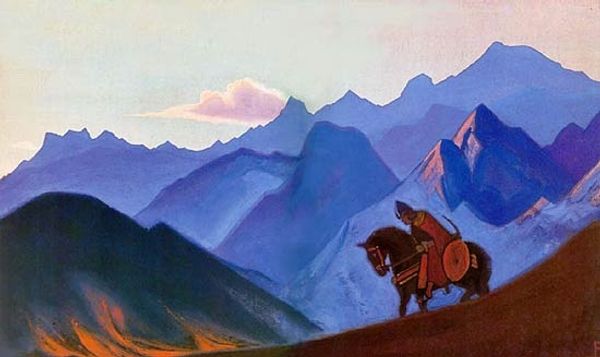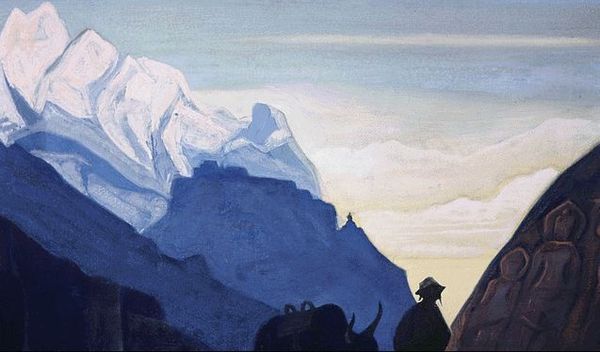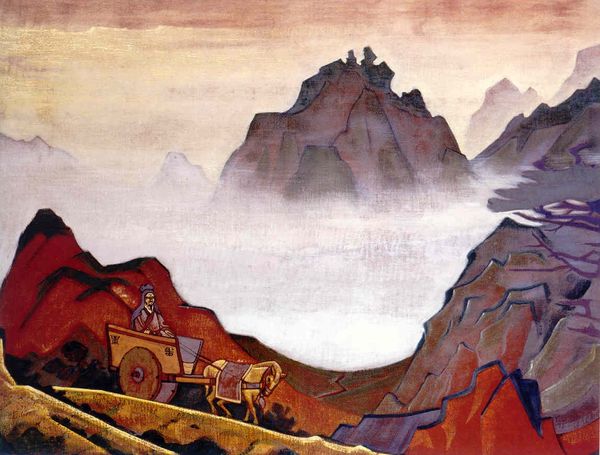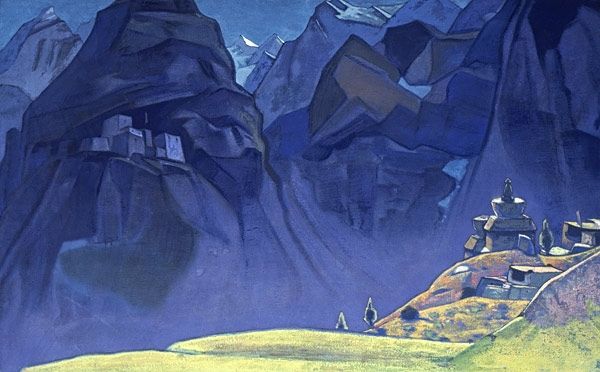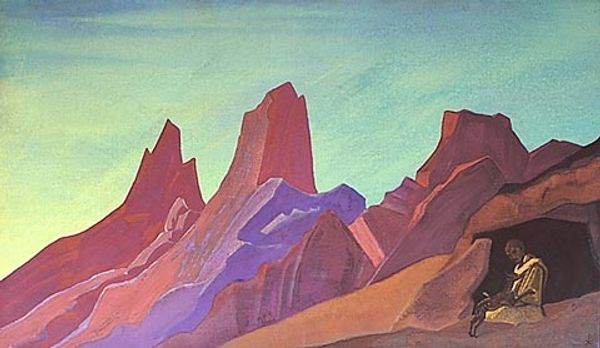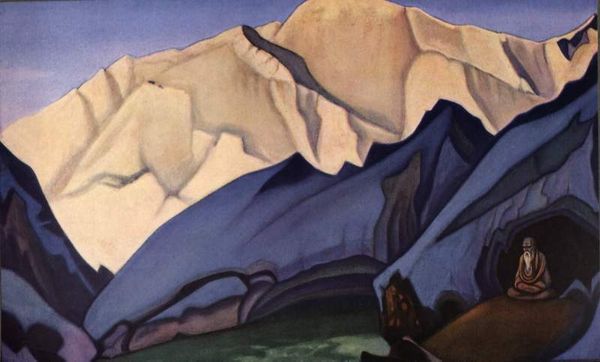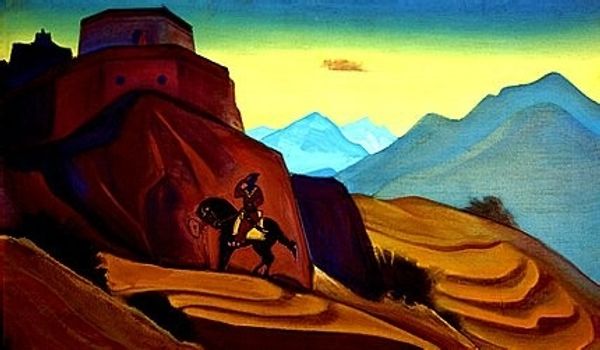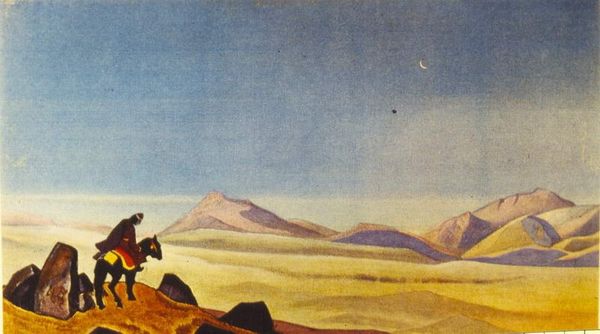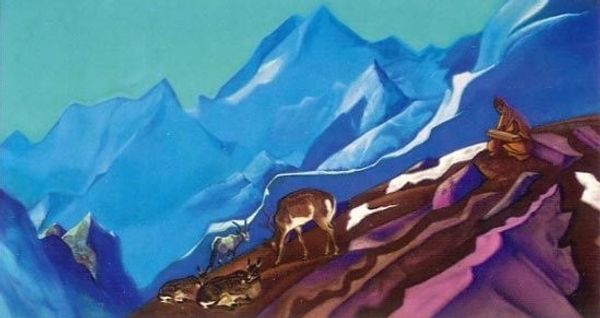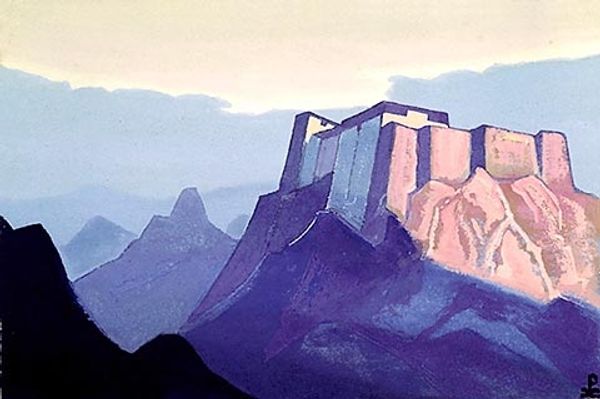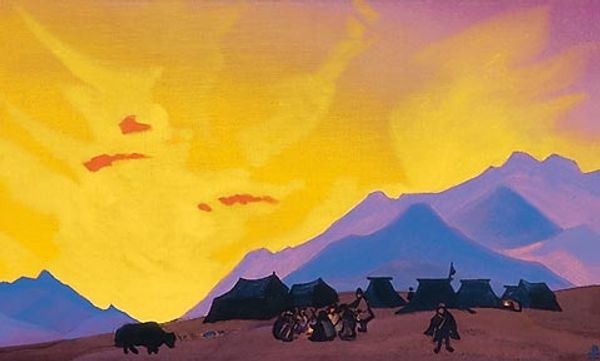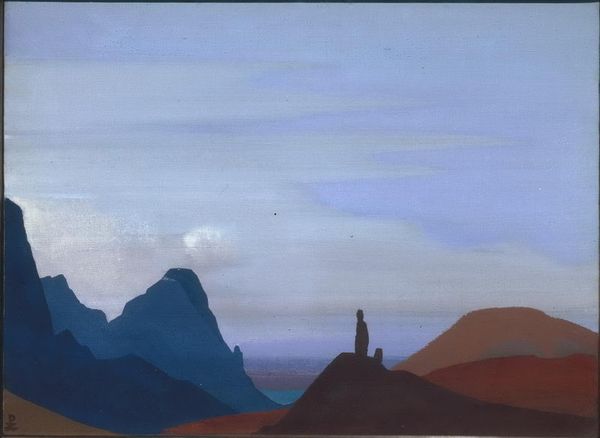
Copyright: Public domain
Editor: This is Nicholas Roerich’s "Mother of Genghis Khan," painted in 1933. It looks like an oil painting, and what strikes me immediately is the dreamlike quality of the blue mountains and the lone figure on horseback. How do you interpret this work? Curator: The resonance of the mother figure extends far beyond a simple portrait. Roerich invites us to consider the archetype of the maternal in the context of empire-building. Look at the almost ethereal mountains – what do they evoke for you? Editor: They feel distant, almost otherworldly. Like a vision of a past, maybe? Curator: Precisely! Roerich uses landscape not just as background, but as a carrier of cultural memory. Notice the symbolic weight given to the Mother herself: regal and austere, connecting her, through visual symbolism, to ideas of strength, endurance, and destiny. Do you see any other symbols that might be significant? Editor: The horse, maybe? It seems so central to the composition. Curator: The horse is crucial. It represents power, certainly, but also a nomadic existence, deeply entwined with the vastness of the land. Consider the artist’s interest in the spiritual. This piece becomes an exploration of cultural inheritance. We could say that she birthed not just a man, but a legacy, and those mountains are witnesses to her achievement. Editor: So it's not just about Genghis Khan but about the power and influence of his mother, visualized through these symbols. It gives me a completely different understanding of the painting. Curator: Exactly. The symbols help reveal layers of cultural meaning and invite reflection on our connections to the past. Editor: I never thought about the power of the landscape itself acting as a cultural memory. I’ll definitely look at art differently now.
Comments
No comments
Be the first to comment and join the conversation on the ultimate creative platform.
